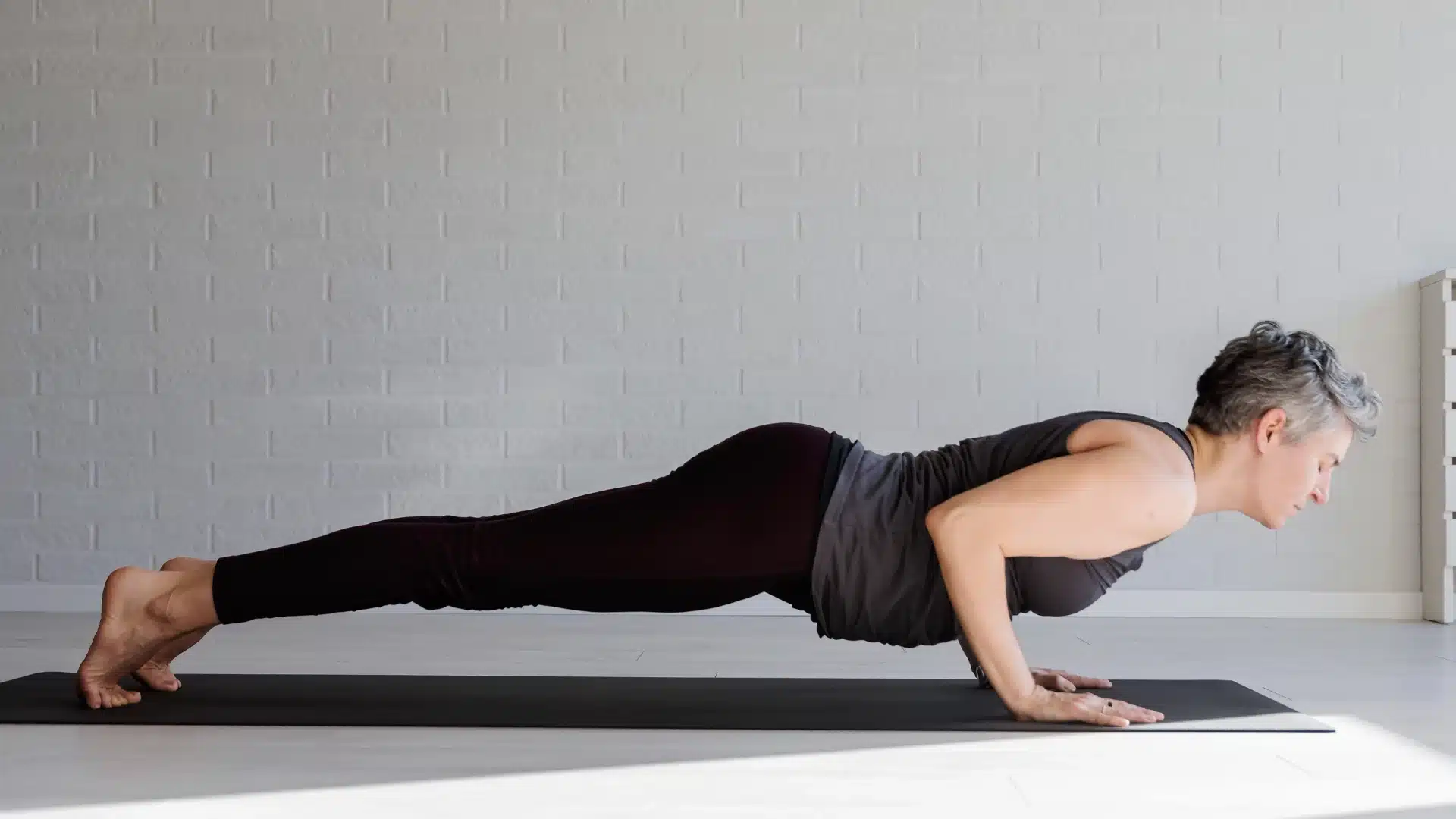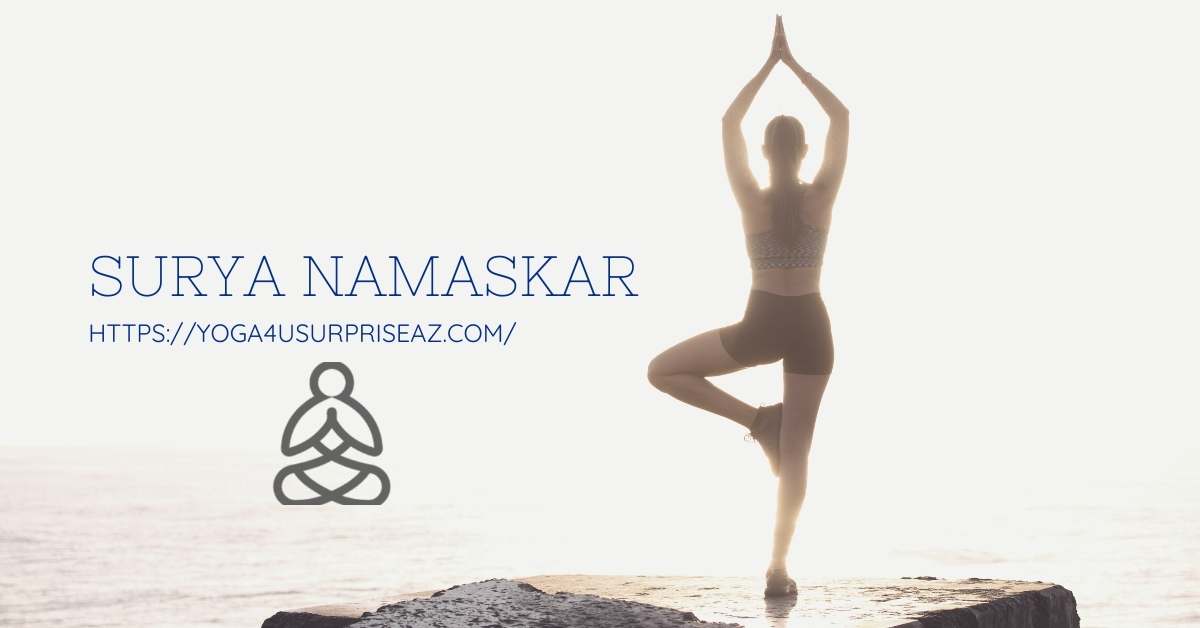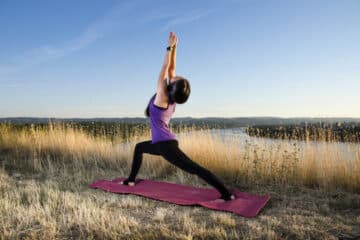Enhance your athleticism with yoga for improved flexibility and strength. Through specific poses and techniques, yoga can help athletes optimize their physical performance and prevent injuries.
Engaging in a regular yoga practice can lead to enhanced mobility, muscle endurance, and balance, which are essential for athletes in various sports. Additionally, yoga can improve mental focus and stress management, providing a holistic approach to athletic training.
Yoga for athletes has gained popularity as a supplemental training method due to its ability to promote flexibility and strength, two crucial components of physical performance.
Implementing yoga into your training routine can enhance your overall athletic abilities and help in preventing injuries due to increased flexibility and muscle endurance.
We’ll explore how yoga can benefit athletes and discuss specific poses and techniques tailored to improve flexibility and strength, providing a holistic approach to athletic training.
The Benefits Of Yoga For Athletes
Empower your practice with yoga for athletes, enhancing both flexibility and strength. Benefit from improved performance, injury prevention, and mental focus while cultivating a mind-body connection. Discover the power of yoga to support your athletic journey.
The Benefits of Yoga for Athletes Yoga has become increasingly popular among athletes as a complementary practice to their training routines. And it’s no wonder why – the benefits of yoga for athletes are numerous and significant. From improved flexibility to increased strength and enhanced balance and stability, incorporating yoga into your athletic routine can take your performance to the next level.
Improved Flexibility
Flexibility is an essential component of athletic performance, as it allows for greater range of motion and reduces the risk of injury. Yoga helps to increase flexibility by targeting and stretching the muscles and connective tissues throughout the body. Regular yoga practice can gradually improve flexibility, enabling athletes to move more freely and perform at their best.
Increased Strength
Strength is another crucial aspect of athletic performance, and yoga can be a powerful tool for building strength in a balanced and functional way. Yoga poses require engagement of various muscle groups, promoting not only physical strength but also core stability. From standing poses that target the legs and hips to arm balances that challenge the upper body, yoga offers a full-body workout that enhances overall strength and power.
Enhanced Balance And Stability
Balance and stability are key factors in athletic performance, whether you’re sprinting on the track or making quick turns on the basketball court. Yoga poses help to improve proprioception, which is your body’s ability to sense its position in space. Through regular practice, athletes can develop a greater awareness of their body’s alignment, leading to improved balance and stability during their sport. In addition to these specific benefits, yoga also provides athletes with an opportunity to cultivate mental focus and concentration, reduce stress and anxiety, and improve recovery and overall well-being. With so many advantages, there’s no reason for athletes to overlook the power of yoga in enhancing their performance. So, if you’re an athlete looking to take your game to the next level, consider incorporating yoga into your training routine. With improved flexibility, increased strength, and enhanced balance and stability, you’ll be poised to reach new heights in your athletic pursuits. Embrace the power of yoga and unlock your full potential as an athlete.
How Yoga Improves Flexibility
Dynamic Stretching
Dynamic stretching in yoga helps athletes improve flexibility by moving through a full range of motion. It involves controlled movements that activate and loosen the muscles, preparing them for physical activity. By incorporating dynamic stretching into their routine, athletes can enhance their flexibility, reduce the risk of injury, and improve overall performance.
Lengthening Muscles
Yoga poses like downward dog and pigeon pose lengthen the muscles, promoting flexibility. These poses target specific muscle groups, elongating and stretching them for increased flexibility and range of motion. Lengthening muscles through yoga also helps athletes to alleviate tightness, improve posture, and enhance their overall physical capabilities.
Releasing Tension
Yoga practice includes breathing techniques and relaxation methods that release tension in the body. This release of tension helps to relax tight muscles and joints, improving flexibility. Athletes benefit from the ability to reach deeper stretches and develop a greater range of motion, promoting flexibility and reducing the risk of strains and injuries.
Building Strength Through Yoga
Bodyweight Exercises
Yoga provides a plethora of opportunities to build strength through bodyweight exercises. As you flow through various asanas, your muscles engage to support your body weight, thus, fostering strength and power. Precisely targeting major muscle groups, yoga’s bodyweight exercises offer a holistic approach to building strength.
Engaging Core Muscles
Integrating yoga into your training regimen effectively engages your core muscles. As you transition through yoga postures, your core stabilizes and supports your body, ultimately cultivating strength and stability. By consistently integrating core-engaging asanas, you enhance your overall athletic performance.
Challenging Balancing Poses
Yoga incorporates challenging balancing poses that demand focus, coordination, and strength. As you strive to maintain these poses, your muscles are compelled to work in unison, thereby, enhancing strength, stability, and proprioception. Embrace these challenging poses to complement your athletic training and improve your overall physical prowess.
Yoga Poses For Athletes
Empower your yoga practice with poses specifically designed for athletes, focusing on enhancing flexibility and strength. These yoga poses provide a holistic approach to improving athletic performance, preventing injuries, and promoting overall well-being.
Introductory Paragraph:
Yoga poses for athletes can significantly enhance their performance by improving flexibility, strength, and focus. Incorporating yoga into your training routine can help prevent injuries, increase overall mobility, and boost mental clarity. In this article, we will explore three essential yoga poses for athletes: Downward Dog, Warrior Series, and Bridge Pose.
Downward Dog
The Downward Dog is a fundamental yoga pose that targets the entire body. To perform this pose:
- Start on all fours with your hands aligned with your shoulders and your knees aligned with your hips.
- Spread your fingers wide for stability and press your palms into the ground.
- Tuck your toes under and lift your hips toward the ceiling, creating an inverted V-shape with your body.
- Engage your core and gently straighten your legs, aiming to bring your heels closer to the floor without forcing them.
- Keep your head in line with your arms and relax your neck.
Practicing Downward Dog on a regular basis can help improve hamstring and calf flexibility, strengthen the shoulders and arms, and release tension in the back.
Warrior Series
The Warrior Series consists of three powerful poses: Warrior I, Warrior II, and Warrior III. These poses provide a comprehensive workout for the legs, core, and upper body, while also increasing balance and stability.
- Warrior I: Start in a lunge position with your right foot forward and your left foot back. Align your front heel with the arch of your back foot. Raise your arms above your head, keeping your shoulders relaxed and your gaze forward.
- Warrior II: From Warrior I, open your hips towards the side as you extend your arms parallel to the floor. Keep your front knee bent and in line with your ankle, while your back leg remains straight.
- Warrior III: From Warrior II, shift your weight onto your front leg and hinge forward at your hips. Lift your back leg while keeping your torso parallel to the floor. Extend your arms out in front of you for balance.
Practicing the Warrior Series can improve leg strength, enhance hip flexibility, and promote mental resilience on and off the field.
Bridge Pose
Bridge Pose is an excellent yoga asana for targeting the core, lower back, and glutes. Here’s how to perform the pose:
- Lie flat on your back with your knees bent and your feet placed hip-distance apart.
- Place your arms alongside your body, with your palms facing down.
- Press your feet firmly into the ground as you lift your hips towards the ceiling.
- Roll your shoulders back and underneath you to open your chest.
- Keep your thighs parallel to each other, and if possible, interlace your fingers below your body for a greater stretch.
Bridge Pose not only strengthens the glutes and lower back muscles but also helps relieve tightness in the hip flexors and enhances overall posture.
Incorporating Yoga Into Your Training Routine
Incorporating yoga into your training routine can be a game-changer for athletes. Yoga offers a unique blend of flexibility, strength, and mental focus that complements traditional workouts and enhances overall performance. Whether you’re a runner, weightlifter, or team sport athlete, adding yoga to your training regimen can help you achieve your goals and prevent injury.
Pre-workout Warm-up
Using yoga as a pre-workout warm-up is a smart way to prepare your body for the physical demands of training. Dynamic yoga poses such as Sun Salutations or Warrior sequences increase blood flow, activate the muscles, and improve joint mobility. This gentle movement will gradually raise your heart rate and warm up your muscles, ensuring that your body is ready to perform at its best.
Post-workout Recovery
After an intense training session, your body needs time to recover and repair. Yoga can be an excellent tool for post-workout recovery. Incorporating yoga poses that focus on stretching and lengthening the muscles can help reduce muscle soreness and increase flexibility. Additionally, the breathing techniques used in yoga can promote relaxation, reduce stress, and aid in the recovery process.
Rest Day Active Recovery
Even on rest days, it’s essential to keep the body in motion. Yoga offers a low-impact form of exercise that engages the muscles while providing a gentle stretch. Practicing yoga on rest days can help increase blood flow, prevent stiffness, and promote faster recovery. It’s a great way to stay active without putting additional strain on the body.
By incorporating yoga into your training routine, you’re not only benefiting your physical performance but also enhancing your mental focus and overall well-being. Whether you choose to include a quick warm-up, a recovery session, or an active rest day, dedicating time to yoga will undoubtedly yield positive results. Start exploring the world of yoga and experience the incredible impact it can have on your athletic journey.

Credit: www.amazon.com
Frequently Asked Questions For Empower Your Practice: Yoga For Athletes – Flexibility And Strength
Can Yoga Improve Flexibility And Strength For Athletes?
Yes, yoga is an excellent practice that increases both flexibility and strength for athletes. Through a combination of poses and movements, yoga helps athletes improve their range of motion and build lean muscle mass. Regular yoga practice can also enhance overall performance and prevent injuries.
Conclusion
Incorporating yoga into your athletic training can be a game-changer for improving both flexibility and strength. By using targeted poses and flows, athletes can enhance their performance, prevent injuries, and achieve optimal physical and mental balance. The powerful combination of yoga and sports not only delivers physical benefits but also cultivates mindfulness and focus.
So, whether you’re a professional athlete or a fitness enthusiast, embracing yoga can truly empower your practice and take your performance to new heights.




